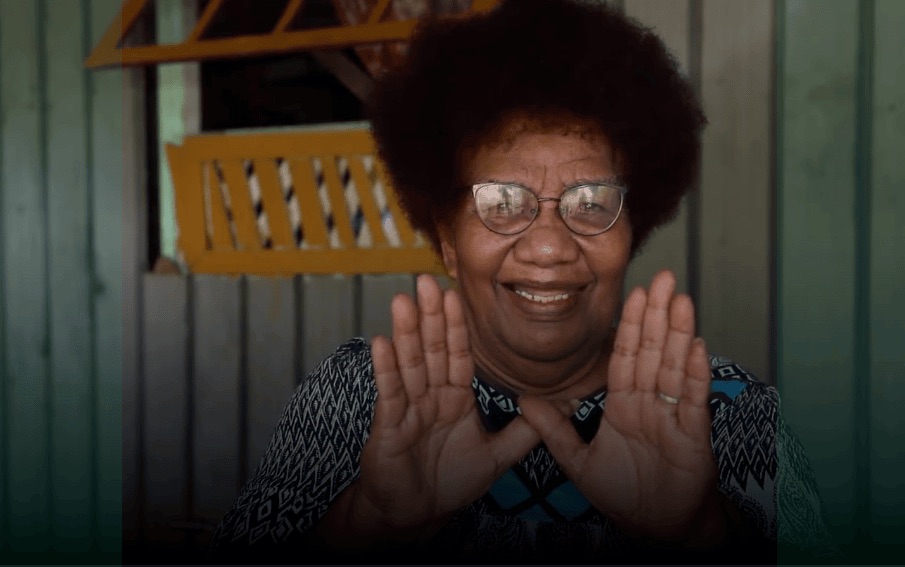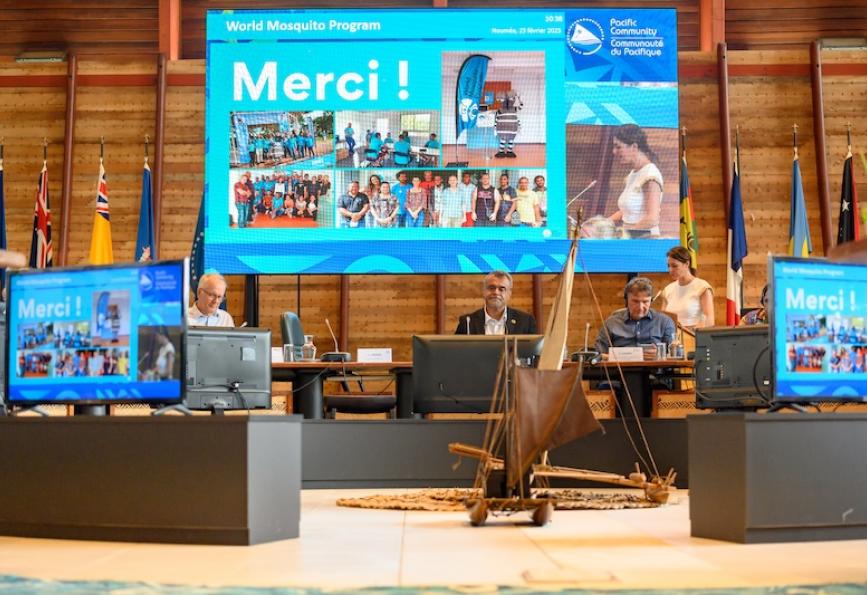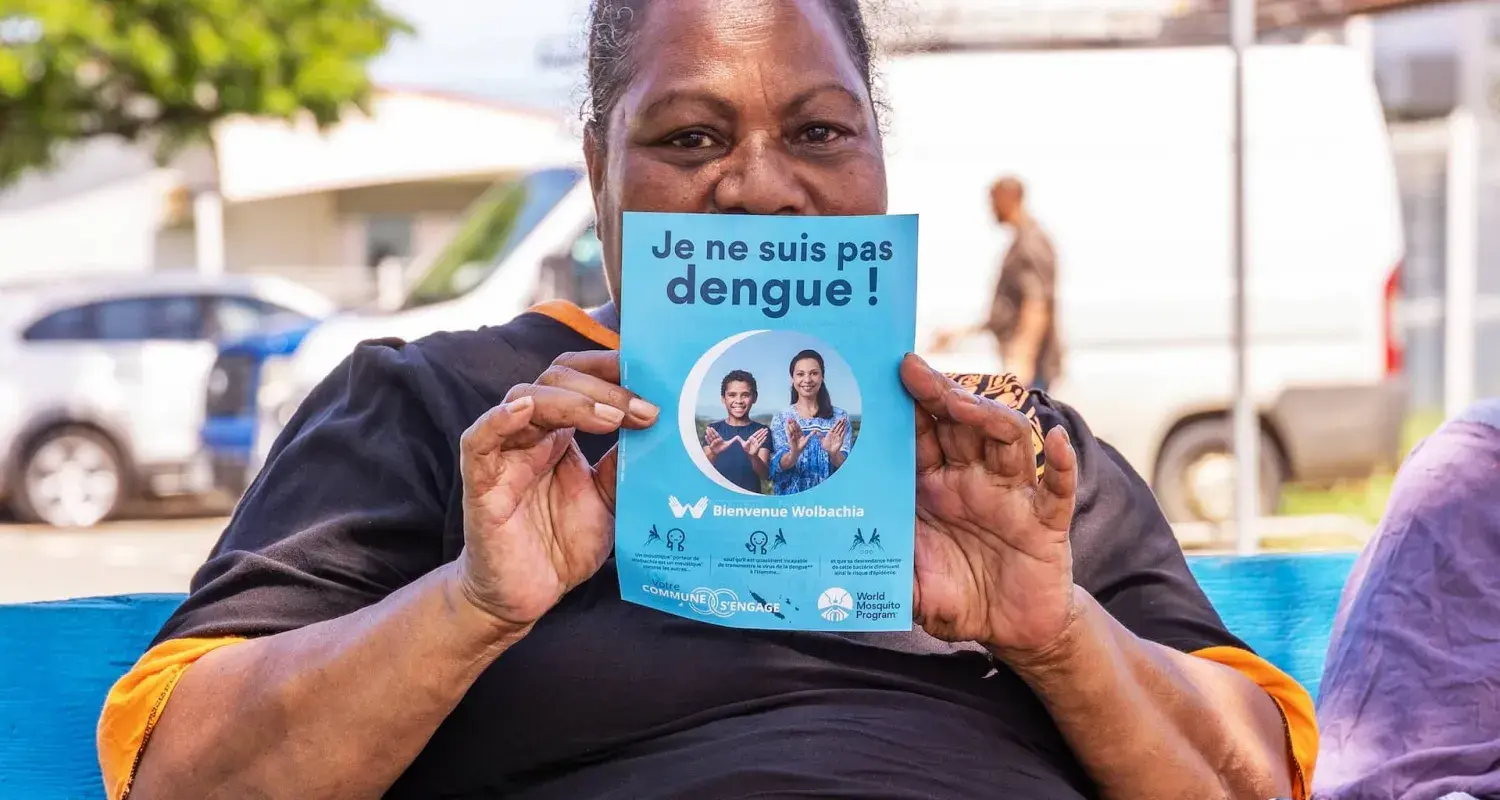New Caledonia's successful implementation of the World Mosquito Program's Wolbachia method has eliminated dengue epidemics across the territory since 2019. We explore how strategic partnerships between government, scientific institutions and local communities created a sustainable solution that has protected residents while delivering significant economic benefits to this South Pacific archipelago.
Naporapoe Kawonion Rose vividly recalls the day she came down with dengue symptoms in her village in New Caledonia.
“I felt very tired and had no strength,” she says. “I had strong headaches and pain everywhere.”
After receiving treatment at a local hospital and recovering, Rose was determined to prevent future dengue infections in her community.
“I started keeping an eye out for mosquito larvae and checked flower pots for standing water. I always told people to cut the grass and look for mosquitoes,” says Rose. “There are many children here, and I am getting old, so I want to fight against dengue because I’m scared.”
Rose’s village is one of the many communities in the diverse French overseas territory which has benefited from the World Mosquito Program’s (WMP) Wolbachia method over the past seven years.

Reducing mosquito-borne diseases in New Caledonia
Launched in March 2018, the project which announced its completion in recent weeks, saw WMP form a partnership with the Government of New Caledonia, the City of Nouméa and the Institute Pasteur in New Caledonia (IPNC) to protect communities from mosquito-borne diseases.The impact on communities like Rose’s has been resounding following releases of Wolbachia mosquitoes in the capital Nouméa, as well as the towns of Mont-Dore, Dumbéa and Païta. More than 24 million have been released with 86 per cent of mosquitoes carrying Wolbachia, and no dengue epidemic since 2019.
“This programme is a great success,” says Nadège Rossi, WMP’s programme coordinator in New Caledonia. “It highlights all the possibilities that this territory offers in terms of innovative technology.”

While some less urbanised and more dispersed areas, including Saint-Louis, show slightly lower rates of Wolbachia establishment, Rossi is very positive about the wider success and lack of epidemics in recent years.
“The average rate of 87 per cent of mosquitoes carrying Wolbachia in Greater Noumea is sufficient, in any case, to break the chains of dengue transmission,” she says. “Especially since this percentage will of course continue to evolve and move towards 100 per cent.
"In the current context, we are almost certain that we will no longer have dengue epidemics in New Caledonia. However, despite everything, we remain vigilant. There are areas that are not covered by this method and therefore we could have smaller outbreaks.”
The programme has also seen a very high public acceptance rate throughout the communities where releases took place. Around 94 per cent of residents in Nouméa, 92 per cent in Dumbéa and Mont-Dore, and 94 per cent in Païta, were all in acceptance of using the method.
No better example of this is in New Caledonia, where the Government of New Caledonia, the City of Nouméa and the Institute Pasteur in New Caledonia (IPNC) were all initial consortium partners when the project launched in the capital, and are still heavily involved right to the end.
Other major partners in New Caledonia have included a diverse ensemble from EEC ENGIE, an energy provider in Nouméa, OPT, New Caledonia’s postal and telecommunication service, to French sportswear company, Decathlon, and environmental and public health association Ensemble pour la Planète (EPLP). The project has also been financially supported by the South province of New Caledonia and the French government.
“Beyond the financial contributions, the partnerships brought many skills to safely and successfully release mosquitoes in New Caledonia,” says Rossi. “Institut Pasteur de Nouvelle-Calédonie brought scientific expertise and skills for rearing and analysing mosquitoes as well as scientific materials.”
24 Million![Mosquito icon]()
86%![New Caledonia Map Icon]()
93%![New Caledonia Map Icon]()
Zero![Healthy Icon]()
>100![Collaborators Icon]()
>3000![Voluntary Icon]()
“The government of New Caledonia brought expertise in field entomology and epidemiology. Thanks to the data of the health department, we had historical information of dengue outbreaks in New Caledonia. We also had supporters from environmental associations, as well as public and private companies, which all played a role in helping promote the programme.
“I’ve had the chance to work with the same collaborators for years, so it is a real team success story and we are all proud to help protect New Caledonia from dengue outbreaks.”
Global progress against dengue with Wolbachia
The success in New Caledonia follows proven evidence, at scale, in other parts of the world. Recent impact from Colombia has seen three and half million people in the Aburrá Valley protected. Medellín, Itagüí and Bellow are now consistently among the lowest ranked cities in the country for dengue incidence. Niterói, WMP’s first fully protected Brazilian city, once one of Rio State’s highest-ranking cities for dengue rates, is now consistently one of the lowest, following Wolbachia establishment.
In Indonesia, following a large three-year randomised controlled trial, the city of Yogyakarta showed a 77 per cent reduction in dengue cases and an 86 per cent reduction in dengue hospitalisations, where Wolbachia mosquitoes were released. The results were published in the New England Journal of Medicine and garnered global media coverage and interest in 2021. In Australia, WMP effectively eliminated dengue as a public health concern with a 98 per cent reduction in transmission rates.
Economic impacts of preventing mosquito-borne diseases
Frequent dengue outbreaks across the world continue to strain health systems, reduce school attendance, and hurt household budgets. And economists estimate the global cost of dengue to be close to $9 billion per year. In New Caledonia, in addition to the lives saved, WMP’s project averted health costs estimated at roughly 67 million euros, while eliminating the use of insecticides on the South Pacific archipelago.
Hospital doctor and city councillor, Tristan Derrick, says: “I have personally seen people die of hemorrhagic dengue fever in intensive care, for whom our care service was powerless. It’s a monumental success (to have avoided any arbovirus epidemics).”

Hope for the future: Expanding Wolbachia beyond New Caledonia
“The method could be an inspiration for the other French overseas territories.….such as the French Antilles, Mayotte and the Réunion, which are really affected by dengue epidemics,” says Julien Pailhère, the Director of the Office of the High Commissioner of France in New Caledonia.
“I really hope (with good results) to develop the project in other French overseas territories and beyond. In the times we live in, skies have no borders.”
For Rossi, it marks the end of a seven-year project, which has seen challenges but also fantastic rewards.
“It is very challenging to implement such a programme, but it is also a rare opportunity to participate in a project which will change the lives of many people,” reflects Rossi.



